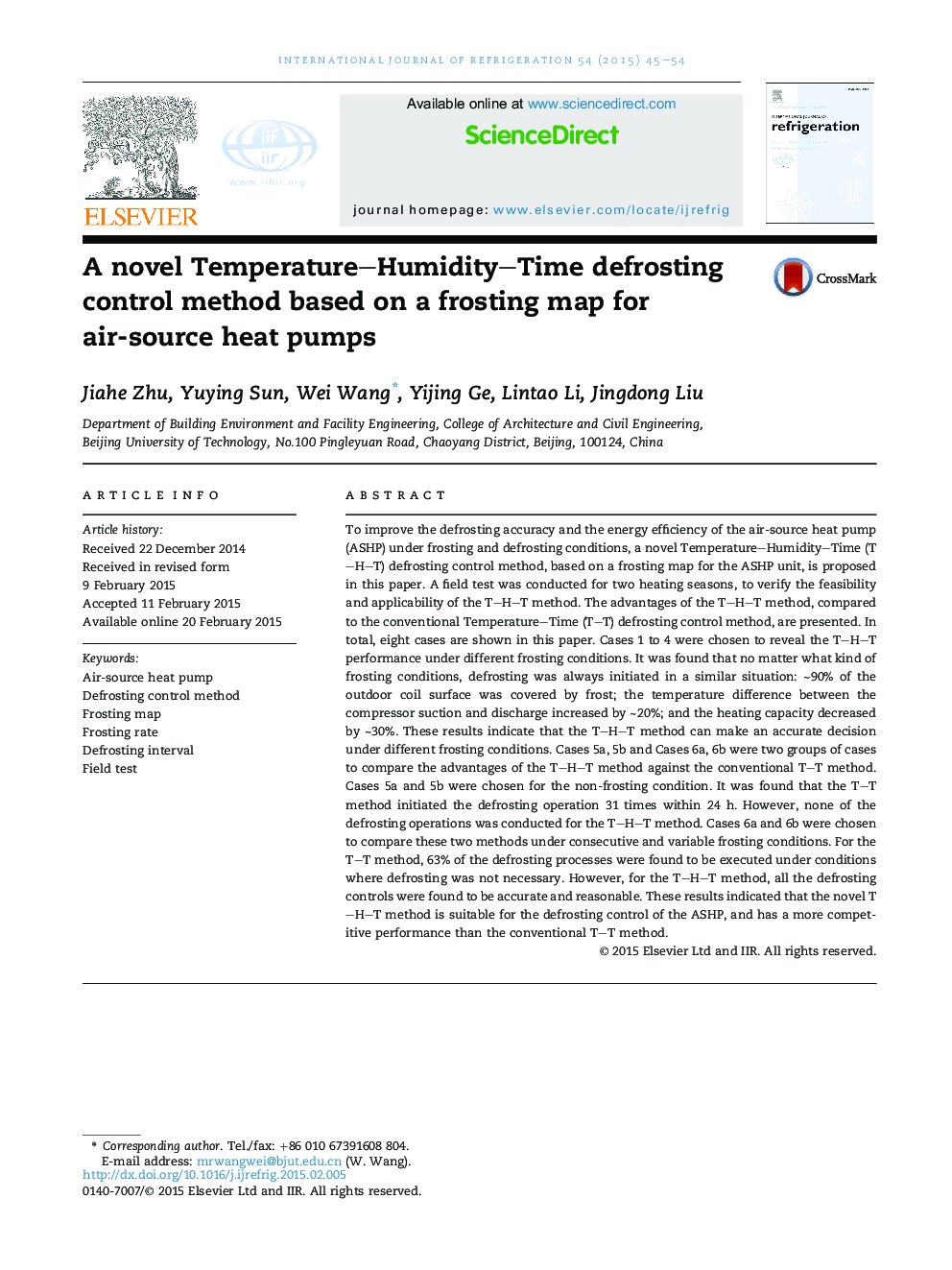| Article ID | Journal | Published Year | Pages | File Type |
|---|---|---|---|---|
| 789279 | International Journal of Refrigeration | 2015 | 10 Pages |
•A novel Temperature–Humidity–Time (T–H–T) defrosting control method is proposed.•A field test was conducted for two heating seasons to verify the T–H–T method.•The characteristics of the ASHP with the T–H–T under different conditions are shown.•The advantages of the T–H–T compared to the conventional T–T method are presented.•Test results indicate that the T–H–T method is more accurate and competitive.
To improve the defrosting accuracy and the energy efficiency of the air-source heat pump (ASHP) under frosting and defrosting conditions, a novel Temperature–Humidity–Time (T–H–T) defrosting control method, based on a frosting map for the ASHP unit, is proposed in this paper. A field test was conducted for two heating seasons, to verify the feasibility and applicability of the T–H–T method. The advantages of the T–H–T method, compared to the conventional Temperature–Time (T–T) defrosting control method, are presented. In total, eight cases are shown in this paper. Cases 1 to 4 were chosen to reveal the T–H–T performance under different frosting conditions. It was found that no matter what kind of frosting conditions, defrosting was always initiated in a similar situation: ∼90% of the outdoor coil surface was covered by frost; the temperature difference between the compressor suction and discharge increased by ∼20%; and the heating capacity decreased by ∼30%. These results indicate that the T–H–T method can make an accurate decision under different frosting conditions. Cases 5a, 5b and Cases 6a, 6b were two groups of cases to compare the advantages of the T–H–T method against the conventional T–T method. Cases 5a and 5b were chosen for the non-frosting condition. It was found that the T–T method initiated the defrosting operation 31 times within 24 h. However, none of the defrosting operations was conducted for the T–H–T method. Cases 6a and 6b were chosen to compare these two methods under consecutive and variable frosting conditions. For the T–T method, 63% of the defrosting processes were found to be executed under conditions where defrosting was not necessary. However, for the T–H–T method, all the defrosting controls were found to be accurate and reasonable. These results indicated that the novel T–H–T method is suitable for the defrosting control of the ASHP, and has a more competitive performance than the conventional T–T method.
